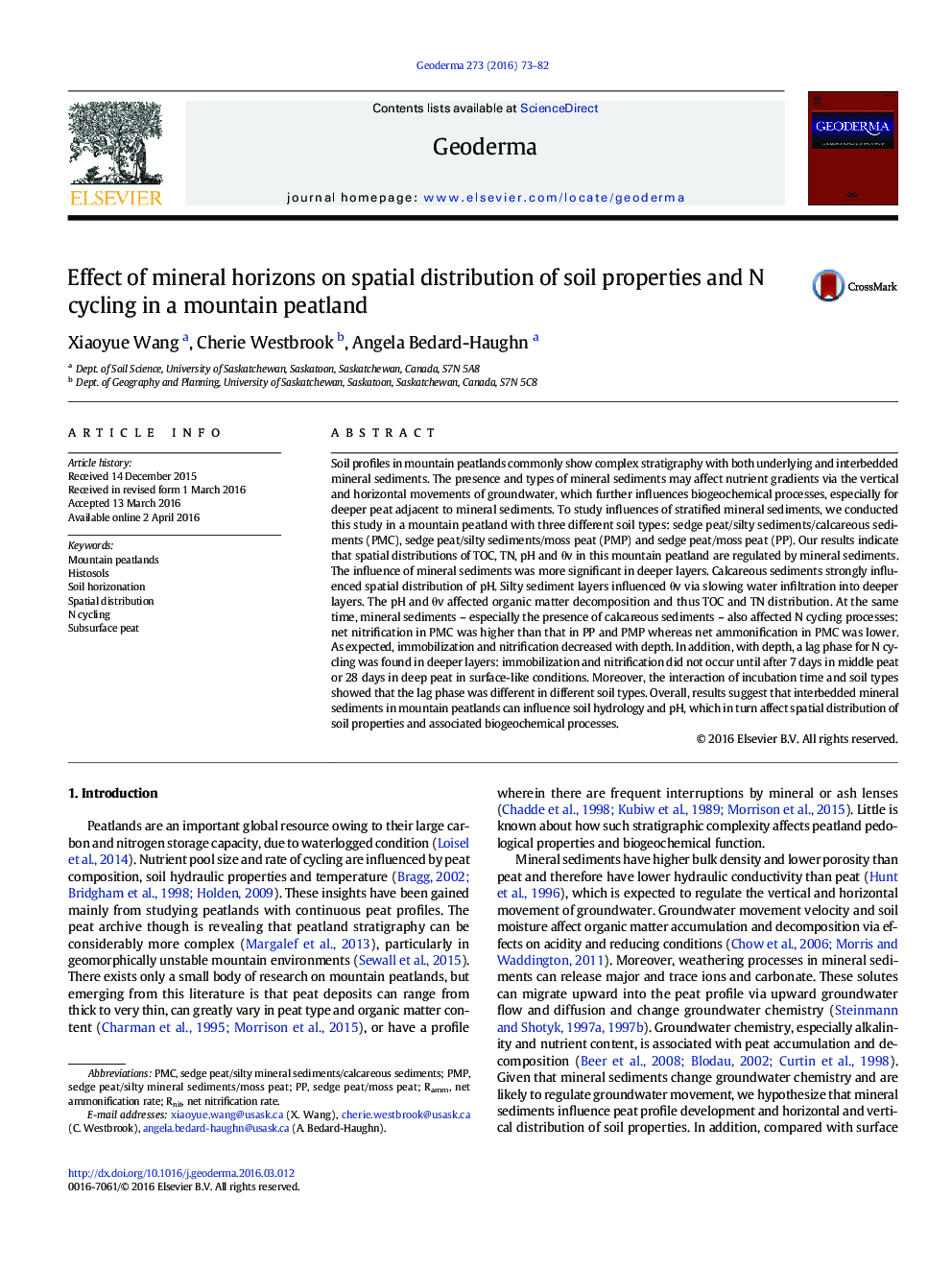| کد مقاله | کد نشریه | سال انتشار | مقاله انگلیسی | نسخه تمام متن |
|---|---|---|---|---|
| 6408339 | 1629444 | 2016 | 10 صفحه PDF | دانلود رایگان |

Highlight
- Peatlands in Canadian Rocky Mountain show complex stratigraphy with shallow underlying and interbedded mineral sediments.
- Mineral horizons affected spatial distribution of θv, TOC, TN and pH and was more significantly in deeper peat layers.
- Presence of calcareous sediments also affected N cycling processes and lag phase of N cycling processes in subsurface peat.
Soil profiles in mountain peatlands commonly show complex stratigraphy with both underlying and interbedded mineral sediments. The presence and types of mineral sediments may affect nutrient gradients via the vertical and horizontal movements of groundwater, which further influences biogeochemical processes, especially for deeper peat adjacent to mineral sediments. To study influences of stratified mineral sediments, we conducted this study in a mountain peatland with three different soil types: sedge peat/silty sediments/calcareous sediments (PMC), sedge peat/silty sediments/moss peat (PMP) and sedge peat/moss peat (PP). Our results indicate that spatial distributions of TOC, TN, pH and θv in this mountain peatland are regulated by mineral sediments. The influence of mineral sediments was more significant in deeper layers. Calcareous sediments strongly influenced spatial distribution of pH. Silty sediment layers influenced θv via slowing water infiltration into deeper layers. The pH and θv affected organic matter decomposition and thus TOC and TN distribution. At the same time, mineral sediments - especially the presence of calcareous sediments - also affected N cycling processes: net nitrification in PMC was higher than that in PP and PMP whereas net ammonification in PMC was lower. As expected, immobilization and nitrification decreased with depth. In addition, with depth, a lag phase for N cycling was found in deeper layers: immobilization and nitrification did not occur until after 7 days in middle peat or 28 days in deep peat in surface-like conditions. Moreover, the interaction of incubation time and soil types showed that the lag phase was different in different soil types. Overall, results suggest that interbedded mineral sediments in mountain peatlands can influence soil hydrology and pH, which in turn affect spatial distribution of soil properties and associated biogeochemical processes.
Journal: Geoderma - Volume 273, 1 July 2016, Pages 73-82